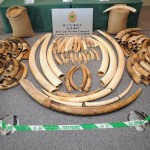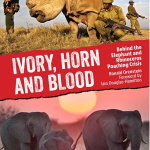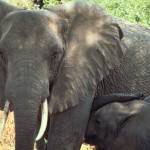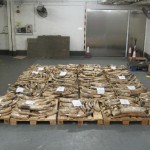
Following the recent ivory stockpile crush in the United States, pressure is mounting on Hong Kong to do the same to its 30 tonnes.
At a February meeting of Hong Kong’s Endangered Species Advisory Committee (ESAC), discussions will be held to decide whether to crush, crush and incinerate, or leave the stockpile. Hong Kong’s harbour trade port is a veritable highway for illegal ivory shipments, many en route to China – where ivory items are prized, and in ever higher demand – as the wealth of the general population increases with economic development.
In the past five years, ivory shipment seizures have skyrocketed from a total of 837kg in 2009 to 7,230kg in 2013, according to Hong Kong’s Agriculture, Fisheries and Conservation Department, amounting to a total of over 30 tonnes.
Most is kept in a warehouse, and is currently being weighed for undisclosed reasons. A small amount is displayed in schools and at the airport for educational purposes, but NGO Hong Kong for Elephants has launched a campaign – Blood Ivory Out of HK Schools – involving local students, and is also petitioning the Hong Kong government to crush and incinerate its ivory stockpile. This would “send a strong message to the world that some of us prefer live elephants to dead art,” says Sharon Kwok, spokesperson for Hong Kong for Elephants.
Moreover, it would eliminate the potential for any leakage of these items onto the black market – where it can be sold for up to $2,000 per kg – a problem that has been reported in China by the Environmental Investigation Agency ( EIA). This is also the reason why burning the ivory once it has been crushed is equally vital, says HK for Elephants spokesman Alex Hofford.
“In Guangzhou recently, and also in Hong Kong, I found many trinkets, jewellery and amulets the same size of small ivory gravel chunks that were produced by the US rock crushing machine.”
The risk of ivory from the seized stockpile going “missing” is even greater in Hong Kong, since there exists a legal loophole that allows possession and sale of ivory that was obtained and carved pre-1989 – the year a global ban was introduced. Monitoring the age of the ivory in circulation, however, is not possible. Particularly when the resources allocated to Hong Kong Customs and Excise department are considered: “Currently, only about 1% of the containers that come through Hong Kong – one of the largest trading ports on the planet – are able to be fully searched,” says Kwok.
Meanwhile, the 7-seater luxury people carriers that are believed to carry the ivory from legal salespoints in Hong Kong – such as local retailer Chinese Arts & Crafts – to China, are never checked, adds Hofford. There have also been no arrests, imprisonments and fines whatsoever resulting from the illegal ivory shipment seizures, of which there have been three since just July.
But the government is open to listening, says Hofford, and momentum just needs to be kept up. The organisation is planning a protest on the day of the ESAC meet, and it doesn’t end there.
“After a crush and burn, we will ask the Hong Kong government to legislate a 10 year moratorium on ivory sales to let the species recover. Hopefully the temporary sales ban could be translated into a permanent one at the end of that decade. From an environmental and public opinion standpoint, it would then be hard for the Hong Kong government to go backwards and roll back the ban,” explains Hofford.
The significance this would have, particularly in Hong Kong where ivory is openly sold in shop windows and regularly smuggled over to China, cannot be underestimated. Because if poaching continues as it is, with 25-30,000 elephants killed for their tusks in 2012, the total wild population of African elephants – estimated at 370-500,000 – will be used up in a decade or so.




